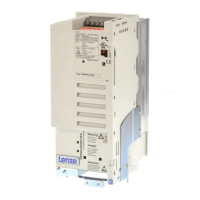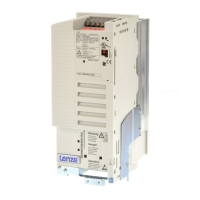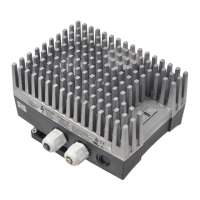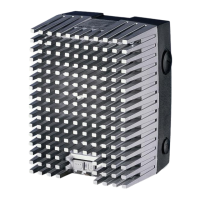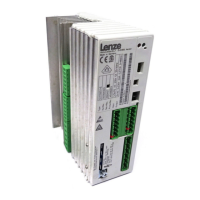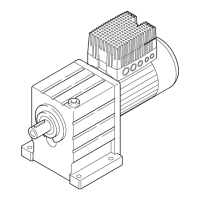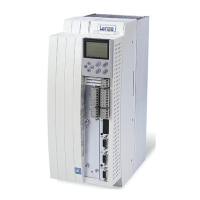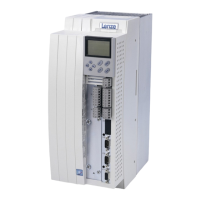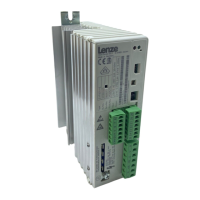Braking operation with external brake resistor
Selection of the brake resistors
13
Braking operation
13.4
13.4.3
L
13.4-8
EDS82EV903-1.0-11/2002
13.4.3 Selection of the brake resistors
The Lenze brake resistors recommended in the tables are selected for the
corresponding controllers (ref. to 150 % power in generator mode). They are
suitable for most applications.
For special applications such as centrifuges, hoists, etc., the brake resistor must
meet the following conditions:
Brake resistor Application
Criteria with active load with passive load
Peak brake power [W]
≥ P
max
⋅ η
e
⋅ η
m
⋅
t
1
t
zykl
≥
P
max
⋅ η
e
⋅ η
m
2
⋅
t
1
t
zykl
Thermal capacity [Ws]
≥ P
max
⋅ η
e
⋅ η
m
⋅ t
1
≥
P
max
⋅ η
e
⋅ η
m
2
⋅ t
1
Resistance [W]
R
min
≤ R ≤
U
DC
2
P
max
⋅ η
e
⋅ η
m
Active load Can move without being influenced by the drive
(e.g. hoists, unwinders)
Passive load Decelerates to standstill with being influenced by the drive
(e.g. horizontal traversing drives, centrifuges, fans)
a
DC
[V] Brake tr ansistor threshold from C0174
P
max
[W] Max. brake power determined by the application
η
e
Electrical efficiency (controller + motor)
Guide values: 0.54 (0.25 kW) ... 0.85 (11 kW)
η
m
Mechanical efficiency (gearbox, machine)
t
1
[s] Braking time
t
cycl
[s] Cycle time = Time between two braking processes (= t1 + break)
R
min
[ Ω] Smallest permissible brake resistor (see rated data for the integrated brake transist or)
